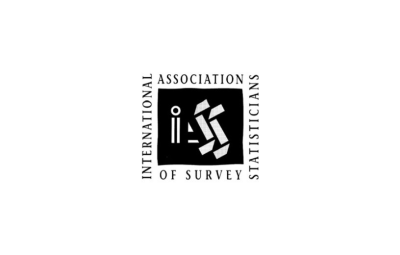Remarks by Katherine Wallman on the Occasion of Louis Kincannon’s Memorial Service, 7 January 2013.
Good afternoon, dear family, friends and colleagues of Louis. While there are many in this room who can no doubt claim a longer professional history with Louis, including Bob Parker (who if I recall correctly shared an office with Louis when both were brand new Census Bureau employees), I believe our first meeting was in February of 1976, when I walked through the doors of the 10th floor of the New Executive Office Building to join the Statistical Policy Division of OMB. Louis was already there – working as I recall with Roy Lowery, Dick Eisinger, and a bit later Jim Tozzi. He remained there until 1981, serving most of those years as the head of the “Reports Management Division,” which played the primary role in the Government’s efforts to control the burdens imposed on the public by information collections of the various agencies.
Louis was lured back to the Census Bureau in the early 1980’s, where he proceeded to serve in a number of positions over the decades. Even in those occasionally awkward times during the 1980’s, Louis was always a willing collaborator, keen to keep the good of the system and its potential contributions clearly in sight, able to get past bureaucratic impediments to making things happen. Social Indicators. Domestic Information Display System. While Louis remained faithful to the Census Bureau, taking on increasing responsibility, I ventured off on sabbatical to work on strengthening ties between the federal statistical agencies and the statistics’ user communities, and through that decade continued to enjoy the cooperation that was a hallmark of Louis’ tenure.
Fast forward to the early 1990’s, when the U.S. was leading the call for the establishment of a Chief Statistician at the Organization for Economic Cooperation and Development. Imagine if you will our decentralized statistical system, with many “stovepipes” producing statistics, but seemingly never talking to one another … Add to that the complexity of those stovepipes dealing with many departments and ministries in each of the OECD member countries, not to mention the somewhat overlapping range of the UN Economic Commission for Europe, and the ever growing presence of the European Union and its statistical arm, Eurostat. Not a pretty picture, and at the very least the source of increasing frustration for our statistical agencies who were receiving duplicative, and often inconsistent, requests for our statistics. Equally easy to imagine is the difficulty one would have as the “new guy” trying to impose himself on these fiefdoms – the perceived threats to their territory.
The solution, of course, was Louis. Beginning in 1992, with keen awareness of the challenges to working in a decentralized system, and perhaps even more importantly outstanding skills as a diplomat, Louis navigated these often turbulent waters, establishing not only the function but also the relationships within the OECD, and with the member countries, that laid the groundwork for this important, continuing role. As Paul Cheung, until recently head of the Statistics Division at the United Nations, wrote, “Louis spent a major part of his career laying the foundation of a global statistical system. He had great foresight of what a global system should build on: the statisticians around the world. He was truly a friend to all statisticians, always willing to listen, always gentle, always having something new to share.”
Louis’ profound contributions to the global statistical system likely are best known to many not here with us today – for example, according to Derek Blades, who worked during those years in Paris with Louis.
During his time at the OECD the organization was starting to look outwards - most importantly towards what was then thought of as the Soviet bloc. l had the good fortune to be in charge of the OECD’s outreach programme in statistics and Louis was a strong supporter of the programme. Early on we received a request from the Mongolian statistical office for help in revising their statistical law. It was arranged that Louis would take this on and he duly left for Ulaan Batoor. He told us about his reception in a Mongolian yurt where he was required to drink fermented mares milk, eat rock-hard camel cheese, and make a show of enjoying mutton cooked (some would say undercooked) by hot stones in Mongolian fashion. He said that substantial quantities of vodka were also available.
Louis obviously made a good impression on the Mongolians and we were asked to provide help in reforming their national accounts. At that time the easiest way to get to Ulaan Batoor was through Beijing. From his time at the Census Bureau, Louis had made many contacts with statisticians from developing countries including China and Louis suggested that I stop by the State Statistical Bureau to meet some of them. This was the start of a productive relationship between the OECD Statistics Directorate and Chinese statisticians. There are still annual meetings with the Chinese and now with Indian statisticians as well. These give the organization an inside look into China’s economic statistics and have certainly helped the Chinese to improve their national accounts among other statistics.
Another colleague, Heinrich Brungger, who led the statistical work at the United Nations’ Economic Commission for Europe, highlighted Louis’ sensitivity for and keen interest in other cultures. “When we worked together in Paris in the 90s,” Heinrich recalls, “I was surprised about his knowledge about the details of the history and geography of Europe. This was also the time when OECD started to build up contacts with China, Russia or Brazil, and he was very instrumental to establishing direct contacts with the responsible persons over there thanks to his ability to listen to and get an understanding of the cultural and other constraints they had to face. His understanding stopped, however, when French fonctionnaires with a life-long job security went on strike for weeks in December 1995 and all public transport came to a standstill, or when French craftsmen, instead of doing a proper repair job in his Paris apartment, tried to explain why something could not be done by them. I will also remember, of course, this apartment from the top of which you had a phantastic view over Paris and you could see nearby Eiffel tower. We had many drinks together up there, and one thing that has to be stressed about Louis is his and Claire’s hospitality.
Indeed, our paths were destined to intertwine – as I returned to OMB and found myself immersed (submerged?) in international waters … also known as the “global” statistical system. For those same years, it was my distinct pleasure to work and visit with Louis in Paris and New York – has anyone mentioned the little “flat” that Louis and Claire found in Paris? Envision a full size grand piano hardly making a dent in the living room space … (and by the way, if you haven’t read Claire’s “Paeonian to Paris,” be sure to do so. You will warm your soul reading about the adventures of Claire and Spouse.)
As we turn to Louis’ family, let me share with you just a few highlights of messages posted these past few weeks to the Census Bureau’s blog remembering Louis:
“Louis was diligent in keeping the ship in shape and the staff working smoothly and harmoniously He was deeply committed to recognizing talent and promoting the careers of others. He also was farsighted, eager to seize opportunities to make the world more aware of how useful Census data are to business, social policy, and every other reach of life. The programs of outreach that he helped pioneer gained the attention of the media and of the general policy organs of government, reaching even into the White House, as probably never before.
“He always gave of his time to meet with us, share concerns and offer help. One of the most gracious men I’ve known, a good hearty laugh and wonderful stories.”
“Mr. Kincannon was always such a kind man. He truly cared about his employees and wanted the best for them.”
“I appreciated his patience and eagerness to teach and mentor me.”
“I will always remember his gentle nature, calm demeanor, and subtle advice.”
“Over the nearly 30 years of my association with him I was touched immeasurably by his wisdom, his wit, and his clear moral compass of the correct way to behave as an executive and a public servant.”“In my twenty years of government service, I never heard him speak ill of anyone nor did I ever hear anyone speak ill of him. He was always a steady anchor in stormy seas and will never be forgotten.
“Louis will forever be held in my memory as one of the most honorable and gracious people I have ever known. He understood that in dealings with people that the real power was demonstrated by simple kindness and respect.”
For me, the stars aligned many times over 30+ years; in 2008, I had the good fortune to welcome Louis to the table of statistical agency heads! Suffice it to say, I could not have been luckier. With his strong allegiance to the principles that underlie our statistical system, his thoughtful consideration of the ideas of others, his dedication to making things work, and his ever charming demeanor, Louis served his country with one exceptional performance after another. I count myself fortunate to have had him as my partner in these adventures, and blessed to have him, and Claire, as my friends.
Au revoir, mon cher ami.
Charles Louis Kincannon
Longtime ASA member and former U.S. Census Bureau Director Charles Louis Kincannon passed away on December 14. Kincannon was born an only child in Waco, Texas, in December of 1940, right on the cusp of World War II. His father traveled often due to his work for a company that owned furniture stores. As a result, Kincannon’s family moved frequently when he was a child. He was enrolled in three schools each year from first through third grades, which made it challenging for him to form friendships.
When Kincannon was in the fourth grade, his family moved to Corpus Christi, Texas, where they remained through Kincannon’s senior year of high school. He graduated in 1959 and went on to major in economics at The University of Texas at Austin.
In December of 1962, during his senior year of college, Kincannon received a telegram from Don Fay, then chief of the personnel division of the employee relations branch. In the telegram, Fay asked him if he would be interested in a job in economic statistics or computer programming. Kincannon, who had never taken a statistics class before, took classes in both subjects during his last semester and found he preferred statistics to computer science.
In June of 1963, Kincannon packed his bags and moved to Washington, DC, a city he had never visited before his move.
After a few years as a statistician in the industry division, Kincannon was encouraged by Bob Nealon to sign up for an internship offered by the U.S. Census Bureau. He interviewed with a panel of executives and was then placed on an assignment in the population division, where Max Shor advised and mentored him.
During his internship, he had an assignment in the Office of Business Economics near Dupont Circle, where he worked on input/output tables from the 1963 business census. After his internship ended in the early 1970s, he returned to the industry division, then the population division, before joining the staff of the Office of Management and Budget (OMB) in 1975. While at OMB, he worked on statistical and regulatory policy during the Ford Administration and then served as the statistical liaison to Vice President Nelson Rockefeller’s office.
In September of 1981, Kincannon returned to the Census Bureau and was appointed deputy director and chief operating officer in January of 1982 by Bruce Chapman, President Reagan’s first director of the bureau. Kincannon also served as acting director from July 1983 to March 1984 and again in 1989. During that time, he directed the final preparations for the 1990 census.
In 1992, Kincannon and his wife, Claire, moved to Paris after he was appointed as the first chief statistician in the Organisation for Economic Co-operation and Development (OECD). He coordinated the organization’s statistical programs and advised the OECD secretary general on statistical policy. In June of 2000, Kincannon returned to the United States. More than a year later, President George W. Bush nominated him for director of the Census Bureau.
Kincannon applied for the directorship in the spring of 2001 and went through many interviews with Congress and the White House. The process was delayed after the 9/11 terrorist attacks occurred. The Senate confirmed him unanimously on March 13, 2002, and he served as the director of the Census Bureau until his retirement in January of 2008. He served the longest of any director since the Eisenhower administration.
Of all his accomplishments during his career, Kincannon once said he was most proud of his work on the American Community Survey.
“We had done planning and good formal testing of the ACS by the time I was named director,” he said. “I knew about the program and thought it was the most sensible thing to stop sending out the long form of the census when people are distracted by so many things. … I was convinced of its utility and was convinced it would be a miraculous improvement to have data for smaller areas once a year instead of just every decade.”
During his long career at the Census Bureau, Kincannon was honored with numerous awards, including the Presidential Rank Award of Meritorious Executive, the Special Award for Excellence of the Interagency Committee on Information Resources Management, and the Commerce Department’s highest civil service honor, the Gold Medal.
To learn more about Kincannon’s career, you can read an oral history given by Kincannon in 1992 at U.S. Census website.
This article originally appeared in the February issue of Amstat News.




